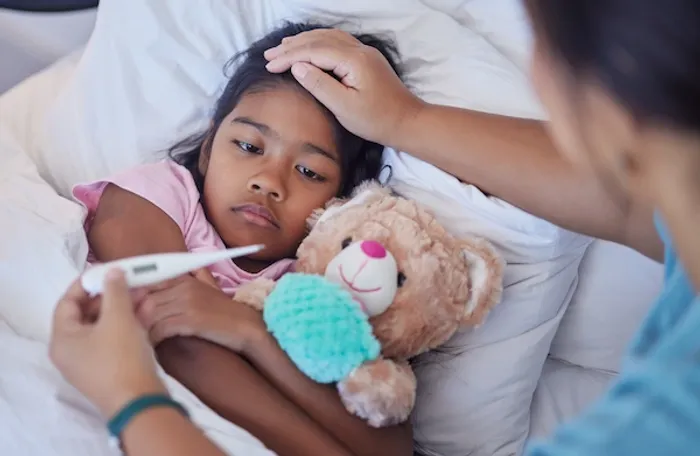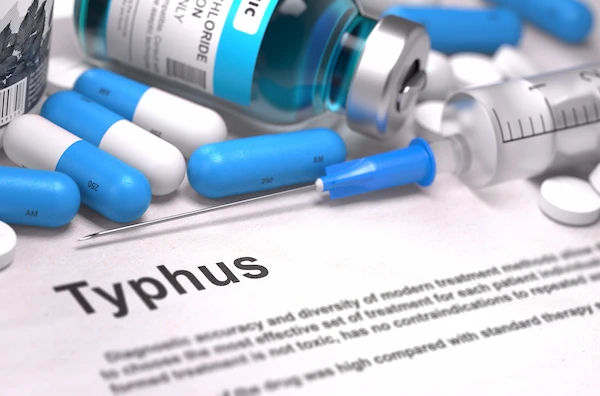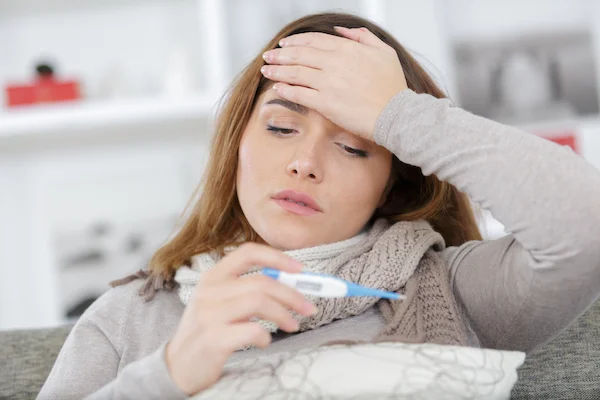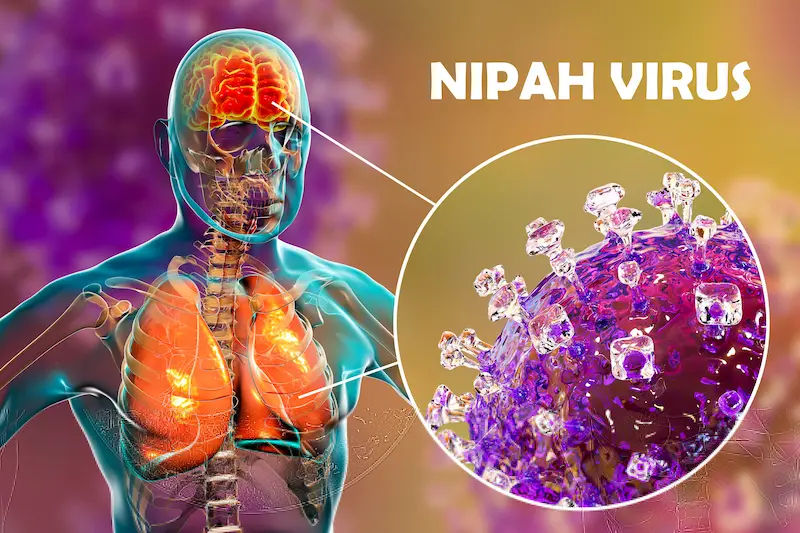Fever In Children: A Complete Guide
Learn about fever in children, its common causes, symptoms, when to worry, and effective home and medical treatments to ensure your child’s quick recovery.

Written by Dr. Dhankecha Mayank Dineshbhai
Reviewed by Dr. Rohinipriyanka Pondugula MBBS
Last updated on 26th Oct, 2025

Introduction
Fever in children can be unsettling—especially when numbers climb at night or your usually playful child looks miserable. This article will equip you with clear, practical steps to manage fever confidently at home and to recognise the few times when urgent care is needed. You’ll learn age-specific thresholds, how to comfort your child, safe medication dosing by weight, and what to do about febrile seizures. We’ll cover common causes across ages, when tests are useful, and India-specific infections like dengue, malaria, typhoid, and COVID-19. You’ll also get hydration-by-weight tips, a simple fever diary template, and answers to the most common parent questions. Throughout, I’ll point you to trustworthy sources and share unique, experience-based insights to reduce anxiety and keep your child safe. If symptoms persist or you’re unsure, help is a click away. Let’s make “fever” less frightening—and more manageable.
Understanding Fever: What It Is and Why It Happens
Fever is a temporary rise in body temperature, most often a sign that your child’s immune system is working against an infection. In children, fever is generally defined as:
- Rectal temperature ≥38.0°C (100.4°F)
- Oral temperature ≥37.8°C (100.0°F)
- Axillary (underarm) temperatures are roughly 0.5°C lower than oral; temporal/tympanic vary by device and technique.
Fever itself is not an illness; it’s a symptom. Cytokines and other immune messengers reset the hypothalamic “thermostat,” raising body temperature to help immune cells work better and slow down many pathogens. That’s why top pediatric bodies advise treating the child’s discomfort—not just the number on the thermometer. If your child is drinking, interacting, and resting, a moderate fever can often be observed without aggressive intervention. Conversely, a low-grade fever with severe lethargy or breathing difficulty demands attention, regardless of the number.
Infections are the most common cause: viral (cold, flu, COVID-19) or bacterial (UTI, ear infection, strep throat). Non-infectious causes include post-vaccination reactions, heat illness, and inflammatory conditions. Severe causes are uncommon but must be recognised with red flags.
Consult Top Specialists
How to Take Your Child’s Temperature Accurately?
Measuring temperature correctly matters as much as the reading itself. Here are the best methods by age:
- Under 3 months: Rectal thermometers are most accurate. Avoid ear thermometers at this age; ear canals are small and readings can be unreliable.
- 3 months–3 years: Rectal or temporal artery thermometers. Ear thermometers can be used if your device is validated for infants and technique is correct.
- Over 4–5 years: Oral (if child can hold probe properly) or temporal; ear is acceptable with good placement. Axillary is convenient but least accurate; consider it a screening method.
Technique tips:
- Rectal: Use a small amount of petroleum jelly, insert 1–2 cm, hold steady, never leave the child unattended.
- Ear: Pull ear back and up for a straight canal; ensure a proper seal.
- Temporal: Measure across the forehead to the hairline; avoid sweat-covered skin which can lower readings.
- Oral: Wait 15 minutes after eating or drinking.
Common errors that skew readings include measuring too soon after a warm bath, overdressing, or taking axillary readings and treating them as equivalent to rectal values. If a reading seems out of line with how your child looks, recheck with the most accurate method for their age.
Fever diary:
- Log time, temperature, site/method, medicine dose/time, fluids taken, urine output, and behaviour (alert, playful, irritable, sleepy).
- Bring this to your appointment; it shortens diagnosis time and reduces unnecessary tests.
When to Worry: Red Flags and Urgent Symptoms
While most fevers are mild and self-limited, some scenarios need urgent care. Evidence-based thresholds:
- Under 3 months old: Any rectal temperature ≥38.0°C (100.4°F) needs immediate medical evaluation. Young infants have higher risk of serious bacterial infection.
- 3–6 months: Temperature ≥39.0°C (102.2°F) or any concerning signs warrants prompt assessment.
- Any age with red flags: persistent lethargy, inconsolable irritability, breathing difficulty, blue lips, severe headache/stiff neck, repeated vomiting, signs of dehydration (no tears, dry mouth, very low urine), a non-blanching rash (glass test), seizure, or fever lasting >3 days without improvement.
The NICE “traffic light” approach (green/amber/red) helps triage children under 5 based on behaviour, circulation, hydration, and respiratory effort. Red features (e.g., grunting, tachypnea, reduced consciousness, non-blanching rash) indicate urgent care; amber features suggest closer observation and clinical review; green features are reassuring but still require parental monitoring.
What to do at night:
8 Reassess: temperature, breathing rate/effort, colour, responsiveness, urine output.
- If a red flag emerges or your gut instinct signals something is very wrong, seek care immediately.
- If symptoms persist beyond two weeks, consult a doctor online with Apollo 24|7 for further evaluation.
Common Causes of Fever by Age Group
Babies and toddlers (0–3 years):
- Viral: Upper respiratory infections, roseola (fever followed by rash), viral gastroenteritis.
- Bacterial: Ear infections (otitis media), urinary tract infections (especially in uncircumcised boys under 1 and girls), pneumonia.
- Post-vaccination fever is common in the first 24–48 hours after some vaccines; it should be mild and short-lived.
Preschool and school-age:
- Viral: Influenza, COVID-19, hand-foot-and-mouth disease.
- Bacterial: Strep throat (school-aged kids), sinusitis, pneumonia.
- Skin/soft tissue: Impetigo or cellulitis can cause fever with localized redness/swelling.
Recurrent or prolonged fever:
- Recurrent viral infections occur as children build immunity.
- Consider UTI, sinusitis, or atypical pneumonia for persistent fever with cough.
- Prolonged fever (>7–10 days) warrants medical review for less common causes (e.g., typhoid in endemic areas, inflammatory conditions).
Home Management: Comfort Comes First
The goal is to keep your child comfortable and hydrated—not to chase a “normal” number.
Hydration strategies (long-tail: hydration tips for fever in children):
- Offer small, frequent sips: 5–10 mL/kg every 30–60 minutes for toddlers and young children, adjusting to thirst and urine output.
- Options: water, oral rehydration solution (ORS), breastmilk/formula, broths, coconut water. Avoid high-sugar sodas.
- Signs of good hydration: moist mouth, tears when crying, urinating at least every 6–8 hours.
Comfort measures:
- Light clothing; breathable layers. Overbundling traps heat.
- Keep room cool (20–22°C) with good airflow.
- Sponge with lukewarm water only if the child is uncomfortable and medication is not available; stop if shivering. Cold baths and alcohol rubs are harmful and not recommended.
- Encourage rest but don’t force strict bed rest—quiet play is fine if the child feels up to it.
If your condition does not improve after trying these methods, book a physical visit to a doctor with Apollo 24|7.
Safe Use of Fever Medicines
1) Paracetamol/acetaminophen (long-tail: safe paracetamol dosage for child by weight):
- Dose: 10–15 mg/kg per dose every 4–6 hours as needed. Do not exceed the product’s maximum daily dose. Use a single product to avoid double-dosing (many cough/cold syrups contain acetaminophen).
- Suitable for most ages; infant drops are concentrated—use the provided syringe.
2) Ibuprofen (long-tail: ibuprofen dose mg/kg for child fever):
- Dose: 5–10 mg/kg per dose every 6–8 hours. Maximum daily dose per product label (commonly up to 40 mg/kg/day).
- Avoid in infants under 6 months, children with dehydration, vomiting, kidney issues, or certain chronic conditions, unless advised by a doctor.
3) Alternating medicines:
- Not routinely necessary and increases risk of dosing errors. If advised to alternate, write a schedule in your fever diary and keep both products labelled with dose and time
4) Avoid aspirin in children due to risk of Reye’s syndrome.
Health Topic Carousel:
Doctor Speciality: Paediatrics
Text: Consult Top Specialists
Febrile Seizures: Scary but Usually Harmless
About 2–5% of children under 5 may experience a febrile seizure. They are typically brief (less than 5 minutes), generalised (whole body), and don’t cause long-term harm.
What it looks like:
Sudden stiffening, twitching or jerking of limbs, eyes rolling back, brief loss of consciousness. Child may be sleepy afterward.
What to do:
- Stay calm. Place the child on their side on a safe surface. Loosen tight clothing.
- Do not put anything in the mouth. Do not restrain movements.
- Time the seizure. If it lasts more than 5 minutes, call emergency services.
- After the seizure stops, seek medical assessment for the cause of the fever and review safety steps.
Risk of recurrence is about one-third. Most children outgrow febrile seizures by age 5–6. Antipyretics may improve comfort but do not reliably prevent febrile seizures.
If seizures recur or any episode exceeds 5 minutes, seek immediate medical attention. If you’re unsure how to proceed after an event, consult a doctor online with Apollo 24|7 for guidance.
Tests and Diagnosis: When Investigations Are Needed
Most simple viral fevers don’t require tests. Testing is considered when:
- Child is under 3 months with fever ≥38.0°C.
- Fever persists beyond 3 days or is accompanied by focal symptoms (painful urination, ear pain, persistent cough, localised pain, rash).
- “Fever without source” in a child under 2—urinalysis/urine culture to rule out UTI.
- Suspected bacterial infections (strep throat with classic signs), or during outbreaks (influenza/COVID-19).
- In endemic regions or after travel: malaria rapid test/smear, dengue NS1/IgM, typhoid tests in prolonged fever with suggestive features.
Typical tests:
- Urinalysis and urine culture (clean-catch or catheter specimen in young children).
- CBC, CRP, procalcitonin (as per clinician judgment).
- Throat swab for strep (if Centor/McIsaac criteria met).
- Chest X-ray if pneumonia is suspected by exam.
- Viral tests (flu/COVID-19) during season or exposure.
Apollo 24|7 offers convenient home collection for tests like CBC, CRP, malaria antigen/parasite smear, dengue NS1/IgM, urine analysis/culture, and COVID-19 RT-PCR—helpful when your child needs rest at home.
Special Situations in India: Dengue, Malaria, Typhoid, and COVID-19
Here are some special situations which you should consider:
1. Dengue:
High fever, severe headache, retro-orbital pain, body aches, sometimes rash. Watch for warning signs around day 3–7: abdominal pain, persistent vomiting, bleeding gums/nose, lethargy, sudden drop in platelets/hematocrit changes. Avoid ibuprofen/aspirin if dengue is suspected.
2. Malaria:
Fever may be high with chills/sweats and can be intermittent (every 48–72 hours) depending on species, but in children it can be non-specific. Travel/exposure history is key; test early if risk factors present.
3. Typhoid (enteric fever):
Prolonged fever (often >5–7 days), abdominal symptoms (pain, constipation or diarrhoea), headache. Requires medical evaluation and antibiotics per local resistance patterns.
4. COVID-19/Influenza:
Fever with cough/sore throat, body aches; loss of taste/smell with COVID-19 is less common in younger kids but possible. Seek testing if exposure or community transmission is high.
- Unique insight: In monsoon/post-monsoon, prioritise dengue and malaria testing for unexplained high fever—especially if there’s a community surge.
If symptoms persist beyond two weeks, consult a doctor online with Apollo 24|7 for further evaluation and a tailored test plan.
Feeding, Fluids, and Rest: Practical Daily Care
What to offer:
- Infants: continue breastmilk/formula on demand; it provides fluids and immune support.
- Toddlers/older kids: ORS, water, broths, lassi, coconut water, diluted fruit juices, chilled soft fruits (banana, watermelon, citrus if tolerated).
- Small, frequent portions; appetite typically returns as fever resolves.
Sleep and environment:
- Keep the room cool and dark. White noise or a bedtime story can reduce anxiety.
- Expect disrupted sleep cycles during fever; prioritise rest over routine.
School/daycare return (long-tail: school return after fever):
Return when fever-free for 24 hours without medication and energy/appetite are improving, unless your school requires longer for certain infections (e.g., flu, COVID-19).
Unique insight: Offer choices—cup, straw, popsicle, spoon—kids drink more when they feel in control. Track urine output as your best day-to-day hydration marker.
Real-World Scenarios: Quick Case Studies
The 2-year-old with sudden high fever and no other symptoms:
Likely viral, but consider urine if no source after 24–48 hours. Home care with fluids and comfort, paracetamol if uncomfortable, reassess next day. If fever persists >48–72 hours or child appears unwell, seek care for exam and possible urine testing.
The 7-year-old with fever and sore throat:
Look for strep features: fever, tender neck nodes, tonsillar exudates, absence of cough. If criteria met, clinician may test and treat if positive. Avoid unnecessary antibiotics if viral signs dominate.
The 10-month-old with fever after vaccinations:
Mild fever and irritability for up to 48 hours can be normal. Use weight-based paracetamol for comfort, fluids, and cool room. If fever is high, lasts longer than two days, or there are red flags (poor feeding, lethargy), seek advice.
If your condition does not improve after trying these methods, book a physical visit to a doctor with Apollo 24|7.
When to Seek Medical Care?
Online consult vs in-person:
- Online: great for guidance on home care, medicine dosing by weight, and deciding if tests are needed.
- In-person: needed for infants under 3 months with fever, red flags (breathing difficulty, non-blanching rash, severe dehydration), prolonged fever, or focal findings (ear pain, chest findings).
Home sample collections:
CBC, CRP, malaria antigen/smear, dengue NS1/IgM, urine analysis/culture, COVID-19 RT-PCR—Apollo 24|7 can arrange home pickup to minimise clinic visits when your child is unwell.
Before your appointment:
Prepare your fever diary, medicine list (with doses), hydration/urine details, and exposure/travel history. Bring photos of any rash taken in good light.
If symptoms persist beyond two weeks, consult a doctor online with Apollo 24|7 for further evaluation.
Prevention and Immunity: Setting Kids Up for Fewer Sick Days
Here are some measures for prevention:
Vaccinations:
Follow your pediatric schedule, including influenza and COVID-19 (as locally advised). Vaccines prevent serious infections and reduce complications that cause high fevers.
Hygiene that works:
- Handwashing before meals and after play, proper tissue use, and regular cleaning of high-touch surfaces.
- Teach “cough into elbow” and avoid sharing water bottles.
Resilience-building:
- Sleep: age-appropriate sleep routines support immune function.
- Nutrition: balanced diet with fruits, vegetables, proteins; iron and vitamin D adequacy matters.
- Outdoor play: sunlight and activity boost overall health.
Unique insight: Family routines beat one-off fixes. A calm evening wind-down, predictable bedtimes, and shared mealtimes reduce illness stress for both kids and parents.
Consult Top Specialists
Conclusion
Fever in children is one of the most common reasons parents seek care—and one of the most anxiety-provoking. With the right approach, you can manage most fevers safely at home. Remember to focus on comfort and hydration, measure temperature correctly for your child’s age, and watch overall behaviour more than a single thermometer reading. Know the red flags—especially for infants under 3 months and any child with breathing difficulty, poor responsiveness, a non-blanching rash, or persistent vomiting. Use fever medicines thoughtfully, by weight, and avoid aspirin. For persistent or unexplained fevers, simple tests like a urine analysis can provide quick answers, while region-specific risks like dengue and malaria deserve early consideration during seasonal surges. Keep a clear fever diary; it’s a powerful tool for your clinician. Most importantly, trust your instincts—if you feel something is off, seek advice promptly. If symptoms persist beyond two weeks, consult a doctor online with Apollo 24|7 for further evaluation. And when tests are needed, Apollo 24|7 offers home collection to keep your child comfortable. With calm, informed steps, you can turn a stressful night into a manageable plan—and help your child recover faster and more comfortably.
Consult Top Specialists

Dr. Saheli Dasgupta
Paediatrician
11 Years • MBBS, MD (Paediatrics), Indian Diploma of Paediatric Critical Care Medicine
Kolkata
Sristi Polyclinic, Kolkata

Dr. Shaalini C
Paediatrician
10 Years • MD(Ped),DNB (Ped)
Chennai
Apollo Clinic, Velachery, Chennai

Dr. Guruprasad N
Paediatrician
7 Years • MBBS, MD Peadiatrics, DNB pediatrics
Bangalore
Apollo Clinic Bellandur, Bangalore

Dr Sharvari Kulkarni
Paediatrician
5 Years • MBBS, MD PEDIATRICS
Pune
Apollo Clinic, Viman Nagar, Pune
Dr. J N V. Bhuvaneswararao
Paediatrician
24 Years • MBBS,Diploma in Child Health
Vijayawada
SRI SRINIVASA CHILDRENS HOSPITAL, Vijayawada
Consult Top Specialists

Dr. Saheli Dasgupta
Paediatrician
11 Years • MBBS, MD (Paediatrics), Indian Diploma of Paediatric Critical Care Medicine
Kolkata
Sristi Polyclinic, Kolkata

Dr. Shaalini C
Paediatrician
10 Years • MD(Ped),DNB (Ped)
Chennai
Apollo Clinic, Velachery, Chennai

Dr. Guruprasad N
Paediatrician
7 Years • MBBS, MD Peadiatrics, DNB pediatrics
Bangalore
Apollo Clinic Bellandur, Bangalore

Dr Sharvari Kulkarni
Paediatrician
5 Years • MBBS, MD PEDIATRICS
Pune
Apollo Clinic, Viman Nagar, Pune
Dr. J N V. Bhuvaneswararao
Paediatrician
24 Years • MBBS,Diploma in Child Health
Vijayawada
SRI SRINIVASA CHILDRENS HOSPITAL, Vijayawada
More articles from Fever
Frequently Asked Questions
How high is too high for a child’s fever?
Any fever in a baby under 3 months (≥38.0°C) needs urgent evaluation. For older children, focus on red flags and how your child looks. If fever persists >3 days or there are concerning symptoms, seek care.
What’s the safe paracetamol dosage for child by weight?
Typically 10–15 mg/kg every 4–6 hours as needed, not exceeding the product’s maximum daily dose. Use the provided syringe for accuracy.
Should I alternate paracetamol and ibuprofen?
Not routinely recommended; it increases dosing error risk. If advised by a clinician, write down times and doses in a fever diary.
Do tepid sponges help reduce fever at night?
Lukewarm sponging may increase comfort if medicines aren’t available, but stop if shivering. Avoid cold baths and alcohol rubs—they can be harmful.
When should my child return to school after a fever?
Once fever-free for 24 hours without medication and energy/appetite are improving. Follow school policies for specific infections.



